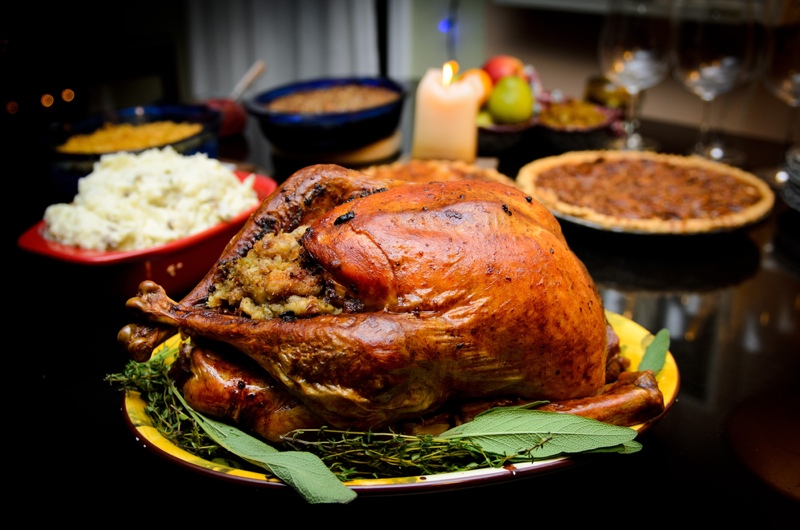
How to Survive a 3,000-Calorie Thanksgiving Meal

Danielle Staub, M.S., R.D., at Lenox Hill Hospital in New York Citycontributed this article to Live Science's Expert Voices: Op-Ed & Insights.
Thanksgiving only comes around once a year, which makes it tempting to over-indulge in holiday favorites. The problem? The average adult consumes 3,000 calories and 229 grams of fat in one Thanksgiving meal. A 160-pound person would have to run at a moderate pace for four hours, swim for five hours or walk 30 miles to burn off those calories.
One must ask, is it really worth it?
Here are ten simple tips to help you stay healthy this Thanksgiving:
1. Start the day with physical activity.
Physical activity helps to regulate appetite, boost metabolism and serves as a good reminder of the hard work that it takes to burn off calories. Plus, by exercising the morning of Thanksgiving, you're starting to create a calorie deficit before you ever indulge in your favorite foods.
2. Eat breakfast.
Sign up for the Live Science daily newsletter now
Get the world’s most fascinating discoveries delivered straight to your inbox.
Meal skipping slows down your metabolism and encourages overeating throughout the day. My favorite pre-turkey breakfast: Non-fat plain Greek yogurt with 1 tbsp ground flaxseed and ¼ cup fresh berries.
3. Eat slowly.
It takes 20 minutes for your brain to register fullness. Eating slowly allows you to enjoy the beautiful food on your plate and avoid overeating. A simple tip: put your fork down between bites and engage in conversation with family and friends.
4. Fill your plate with seasonal, fiber-rich produce.
During the fall, in-season produce is packed with flavor and nutrition. The best seasonal finds: apples, pears, pomegranate, pumpkin, winter squash, sweet potato, parsnips, radish, kale and mushrooms. My favorite seasonal side is roasted root vegetables (sweet potato, parsnips and carrots) with olive oil and herbs de Provence.
5. Keep it lean.
Opt for a reasonable portion of skinless, white-meat turkey. By opting for white meat over dark, per 3 oz. serving, you'll save 45 calories and 6 grams of saturated fat.
6. Be mindful of alcohol intake.

The average glass of wine or beer packs 150 calories, which can add up quickly during the holidays. Enjoy a glass or two of your favorite beverage, but be mindful of overdoing it, since this can quickly lead to weight gain.
7. Make healthy substitutions.
Cut down the calories and saturated fat in your holiday recipes — your guests will never know, plus you'll be doing everyone a heart-healthy favor. Use Greek yogurt in place of butter or sour cream; applesauce instead of oil; low fat milk or almond milk instead of cream.
8. Avoid seconds.
Just don't do it. Going back for a second plate is often what leaves us feeling uncomfortably full and tired after the Thanksgiving meal.
9. Stay hydrated.
This is key in maintaining a healthy weight. We often confuse the feeling of hunger with thirst. Make sure to drink water throughout the day (at least eight glasses), and have a nice tall glass before sitting down to the Thanksgiving table.
10. Keep it in perspective.
Overeating one day won't make you gain weight. It takes a long period of overeating to gain weight, so if you do indulge over Thanksgiving, put it behind you and return to your normal eating plan the next day. And most importantly, enjoy the time with your family and friends!
Follow all of the Expert Voices issues and debates — and become part of the discussion — on Facebook, Twitter and Google+. The views expressed are those of the author and do not necessarily reflect the views of the publisher. This version of the article was originally published on Live Science.









